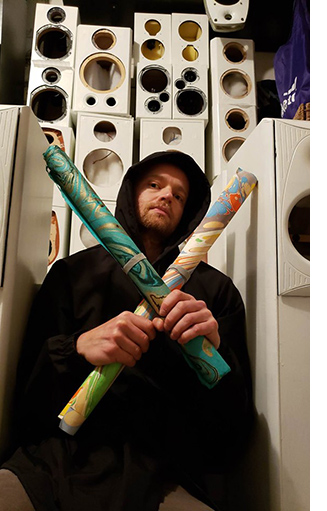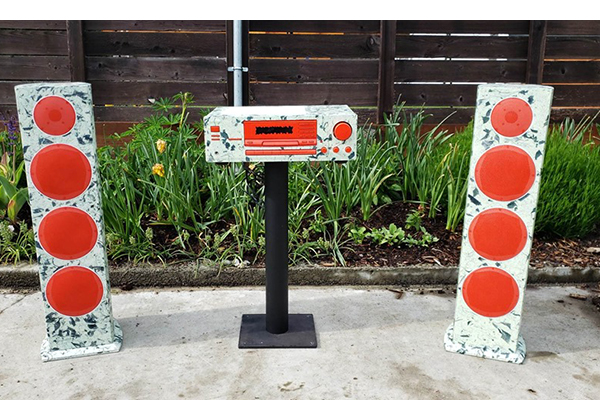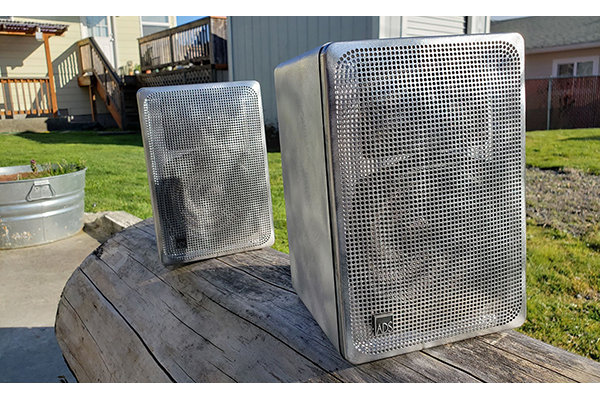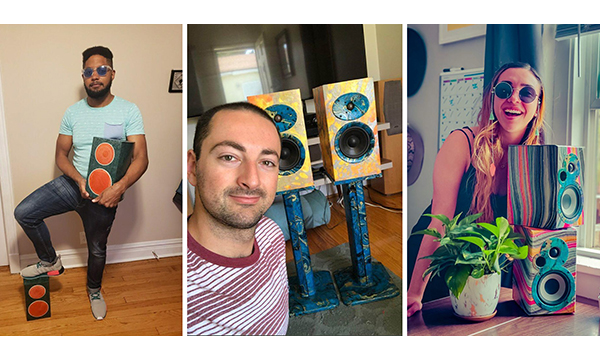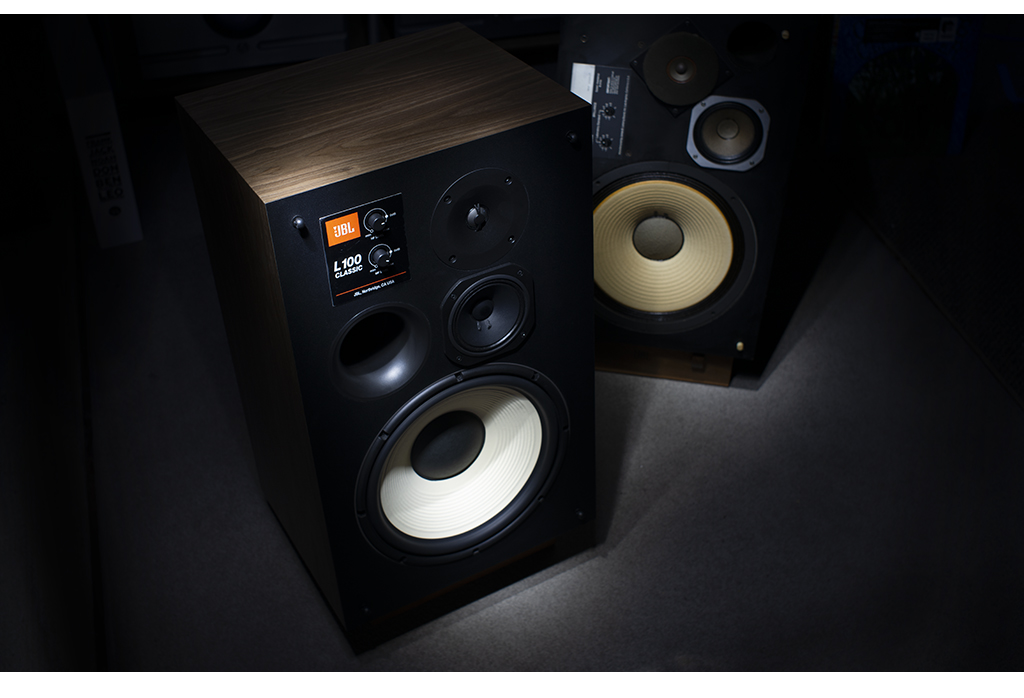 In the 70s and throughout the 80s, the JBL L-100 was a very successful loudspeaker. Having a production run from 1970 to the mid-80s, the L-100 sold in more significant numbers than any other model, and perhaps one of the greatest selling speakers in audio history.
In the 70s and throughout the 80s, the JBL L-100 was a very successful loudspeaker. Having a production run from 1970 to the mid-80s, the L-100 sold in more significant numbers than any other model, and perhaps one of the greatest selling speakers in audio history.
For those squealing about the $4,000/pair cost, a quick look at a currency calculator reveals that the $546 it took to buy a pair of L-100s in 1970 is worth about $3,700 in 2019. By comparison, a brand new Camaro (V8 sport coupe, not a Z28) back in 1970 was about $3,100, and a new Camaro goes out the door, moderately appointed (but still with a V8) is about $45,000. Clearly, JBL has done a better job of keeping pace with inflation. However, to be fair, a 1970 Camaro in great shape will fetch 50 to 100 thousand dollars at auction. A clean pair of L-100 originals about $1,500.
Considering what three to four thousand dollars buys in a pair of speakers these days, the new JBL will not be everyone’s cup of, but the value they do bring to the table is unmistakable. There are definitely more audiophile-y speakers out there, but to this writer, loudspeakers are like buying a painting. Some prefer the French impressionists, while others like Andy Warhol, and yet others like something else.
If you want more resolution and a broader sound field, think about a pair of comparably priced MartinLogans, or Magnepans. If you’d like a midrange that does a better job with the human voice, think about some Harbeths, Grahams, or ProAcs. We all know that there are tons of choices, and $4k/pair is an excellent speaker budget. You should be able to find something you love with four thousand bucks in your pocket.
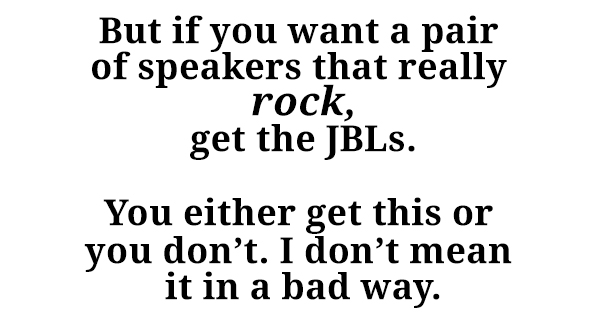
Just as one person would rather peel out with a nearly 600 horsepower Dodge Challenger than get a wimpy four-cylinder Porsche Cayman S that is only about 300 horsepower (but goes around corners way better), it’s easy to see the attraction. Fun can be delivered within different paradigms and still be fun.
Comparing to the originals
It’s incredibly easy to let a romanticized past get the better of you. And as a boomer to all of you in younger generations, laugh now. Winter gets longer and more treacherous the older you get. It happens. But we try not to play it that way.
With a pair of mint originals at hand to make a direct comparison, it underlines even further what great speakers the new Classics are. The originals still have an unmistakable cool factor, and there are several updated crossover kits on that market that are claimed to make the originals otherworldly, but that has to be another day. One can only tweak so much.
Unlike today’s reimagined muscle cars paying fairly close visual homage to their 70s counterparts, the L100 classic looks incredibly close, whether the grilles are on or off. The pulp cone midrange driver (albeit updated) and woofer (same) are still in place, though today’s 12-inch woofer now sports a rubber cone surround, where the original featured a pleated paper surround. The paper coned tweeter in the original is now replaced by a titanium dome, which incidentally, JBL has done an excellent job at taming.
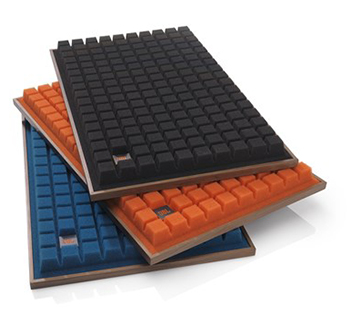 Best of all, the sculpted foam grille remains. When I sold these speakers back in the late 70s, everyone knew that grille. Whether on purpose or by accident back then, this was part of what made the L-100 an icon. And this charm remains. Foam choices are orange, blue, and brown.
Best of all, the sculpted foam grille remains. When I sold these speakers back in the late 70s, everyone knew that grille. Whether on purpose or by accident back then, this was part of what made the L-100 an icon. And this charm remains. Foam choices are orange, blue, and brown.
My originals are orange, so it felt like a great idea to get more subdued brown ones this time. Fortunately, your JBL dealer can supply the other colors for $249 a pair, so I foresee some blue ones in my future. (Ed. note: since this was originally published earlier this year in our 100th anniversary issue, I have acquired a blue set, thanks to staffer, Tom Casselli, who now has the orange. Hmmm.)
While many snooty late 70s/early 80s audiophiles dismissed the L100 of the day, it was a much better speaker than many gave it credit for. Unfortunately, most mass-market retailers sold em with a crappy Kenwood receiver (or something else equally dreadful) that didn’t have the current drive to tame the woofer, or the refinement to get a decent top-end response. I always seemed to remember that connecting my pair up to a Conrad Johnson MV50 was pretty rocking, but again, that memory thing.
This time though, I was right. Hooking the original JBL’s up to the PrimaLuna EVO400 monoblocks with a full complement of EL34 tubes is indeed glorious, and in fact, even better than I remember.
Out with the old, in with the new
The L-100 Classics were far and away the hit of the 2018 Rocky Mountain Audiofest, even if they were hooked up to an awfully dry sounding Levinson amplifier. As part of the same conglomo, I’m sure they had to use that sterile, boring Levinson amp, but they should have pulled out a freshly re-capped Marantz 2275, or god forbid, a McIntosh MC275. Sometimes you have to cross party lines to reach the desired result. But I heard enough to get the essence.
Earlier this year, getting a pair of these for review proved nearly impossible. So, kudos for making this review possible go to Mr. Steve Rowell at Audio Classics for putting this together. I rarely buy a piece of gear before the investigation even begins, but I knew I wanted to get old with a pair of these. Staff member Jessica Sieracki took the vintage ones off my hands after, so onward and upward.
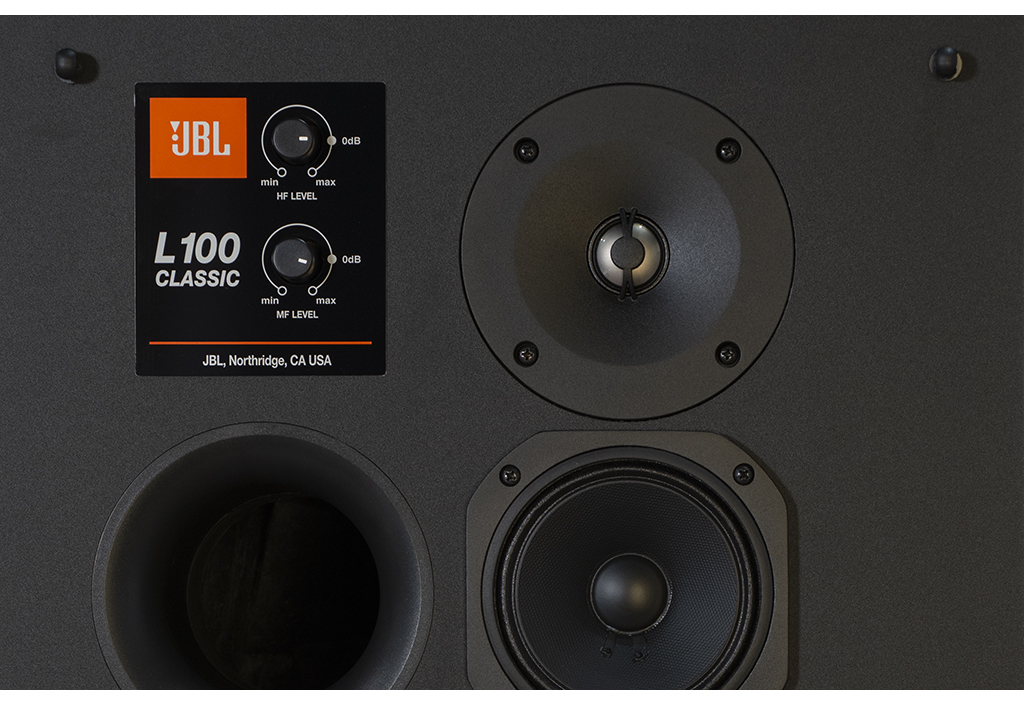
Like several other speakers with a metal dome tweeter, the L-100 is slightly bright out of the box. This went away after about 50 hours of play and is gone entirely by 100 hours. The midrange and tweeter level controls are much more useful than they are on the originals and come in handy fine-tuning to your destination amplifier, cable, and room choice. My living room is a bit livelier than in the main listening room, so a nudge of the tweeter control in the counterclockwise direction is both handy and welcome.
How do they compare?
Now that these speakers have been out for just over a year, the internet abounds with multiple opinions, many centering around the L-100 classic, not being an “audiophile speaker.” It is, and it isn’t. If by audiophile speaker, you mean hyper-detailed, with pinpoint imaging, and pretty much no bass to speak of, then the L-100 classic speaker is not an audiophile speaker.
While attending a demonstration of another manufacturer, the fellow running the show said that when making a speaker, you can go for accuracy, or you can go for something more fun. Clearly, the JBL engineers went for the latter, as these are without question one of the most fun pairs of speakers I’ve ever used.
Like the originals, these are genuinely a garbage in/garbage out speaker. Pair them with low quality, low-resolution equipment , and they will reveal what is behind them. Mate them to great electronics, and they stand up very well indeed.
The L-100s go deep. A comparable pair of mini-monitors from across the pond sound absolutely wimpy in comparison at first blush. But a side by side comparison with a pair of Harbeth Compact 7s reveals the Brit monitors to be cleaner and less cloudy through the mid-band – you can’t argue with the BBC. Think of the Harbeths as a cool white color rendition and the JBL’s a warm white rendition. I own both, I enjoy both, but if you have to choose one, it’s probably going to be down to your ultimate preferences.
The L-100s definitely go way down deep, but the character of the bass rendered is slightly warm. If you’re listening to classic rock or jazz, this is probably going to be pretty pleasant. Those of you on a quest for the absolute sound, whatever that is, will probably go elsewhere. Much like the originals, plopping a Joni Mitchell record on the turntable and easing back in the couch with the L100 Classics is one of life’s great pleasures. Especially with a good tube amp. I’d highly suggest the PrimaLuna, an MC275 or a VAC amp as my first choices.
The JBLs paint a fairly big sonic picture, but it’s more diffuse. While it expands slightly beyond the speaker boundaries, it’s not all-encompassing the way a pair of panel speakers or a perfectly optimized pair of Falcon LS3/5as can. They don’t entirely disappear in the room all the way, but that’s ok.
One other forgotten aspect is the ability to play at a reasonably convincing level. When the other speakers have long run out of dynamic capability, the L-100 Classics still have plenty of headroom left. Oddly, while they are slightly grainy in comparison to a few other speakers, this does not increase at higher levels. I’d venture to guess that some of the insight gained in studio monitor and sound reinforcement has trickled down to these speakers. If you want a pair of real rock and roll speakers, these will do quite nicely.
At the end of the day, the JBL L-100 Classics remind me a lot of that great American amplifier, the McIntosh MC275. It’s not the last word in any of the standard audiophile qualifiers, but I dare you to have a bad day listening to one. The same goes for the L-100 Classics. I dare you to have a bad time listening to your favorite music, no matter what generation it’s from when you’re rocking a pair of L-100 Classics.
And that’s their charm. Considering I’ve had a pair of the originals in one form or another for the last 40 years, the chance that these will be with me till the end is high. Want a good deal? Show up at the estate sale in 2055. I’m sure our kids will sell em to you cheap.
Classic ride, classic speaks. What’s NOT to love?
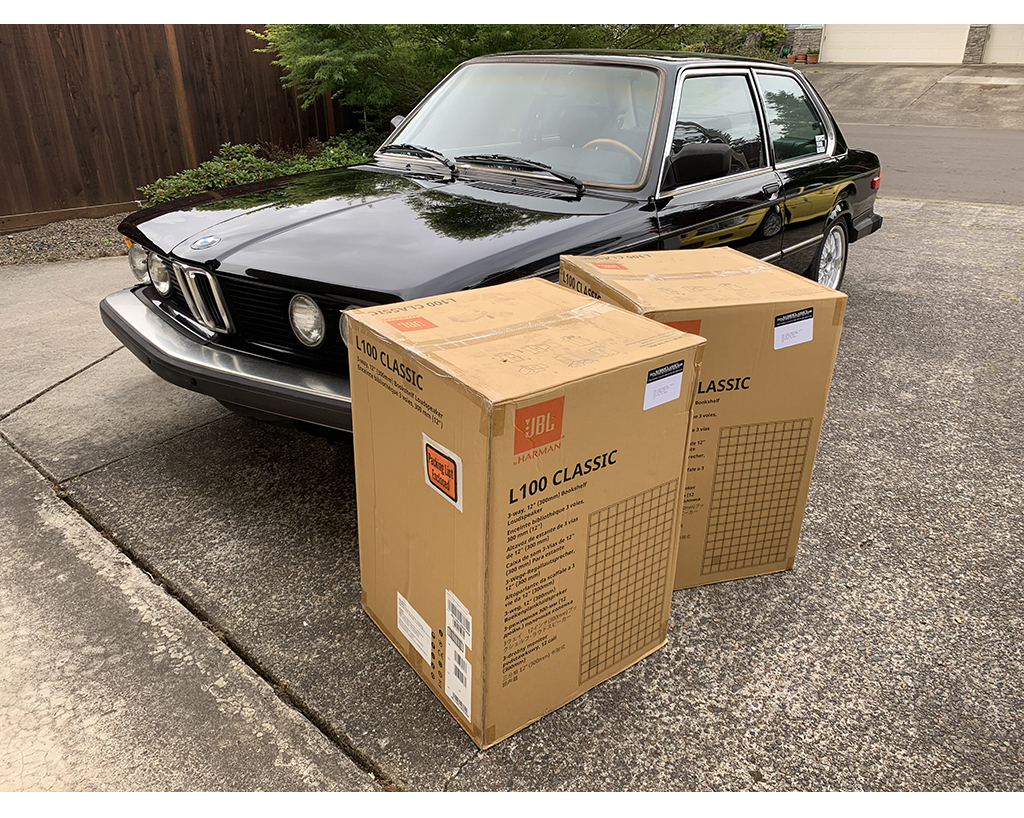
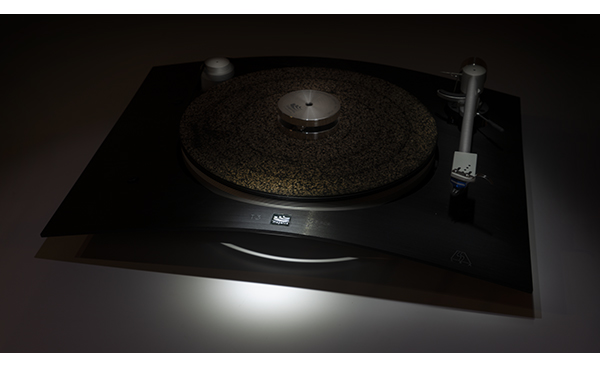 Those of you that know Underwood Wally of Underwood HiFi, know he’s the king of spotting great value and performance. You might have seen this interesting table at the last Rocky Mountain Audio Fest.
Those of you that know Underwood Wally of Underwood HiFi, know he’s the king of spotting great value and performance. You might have seen this interesting table at the last Rocky Mountain Audio Fest.







